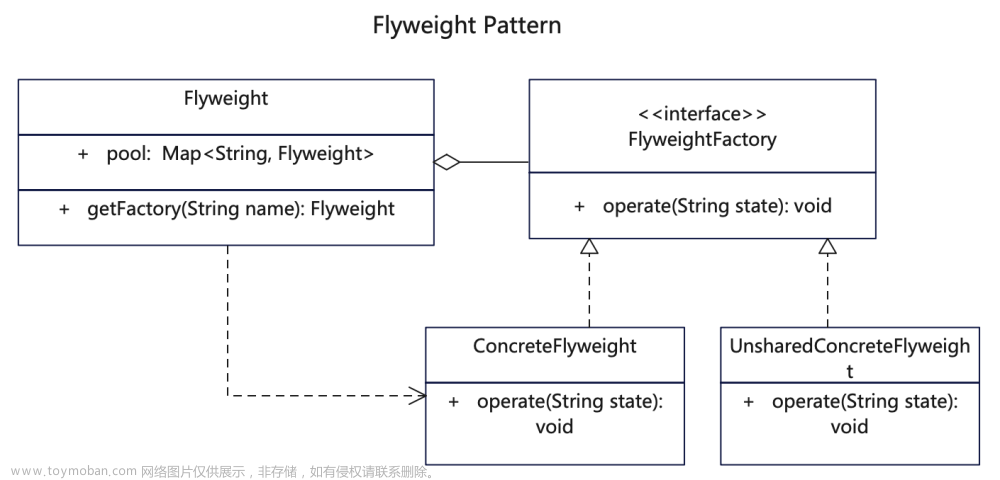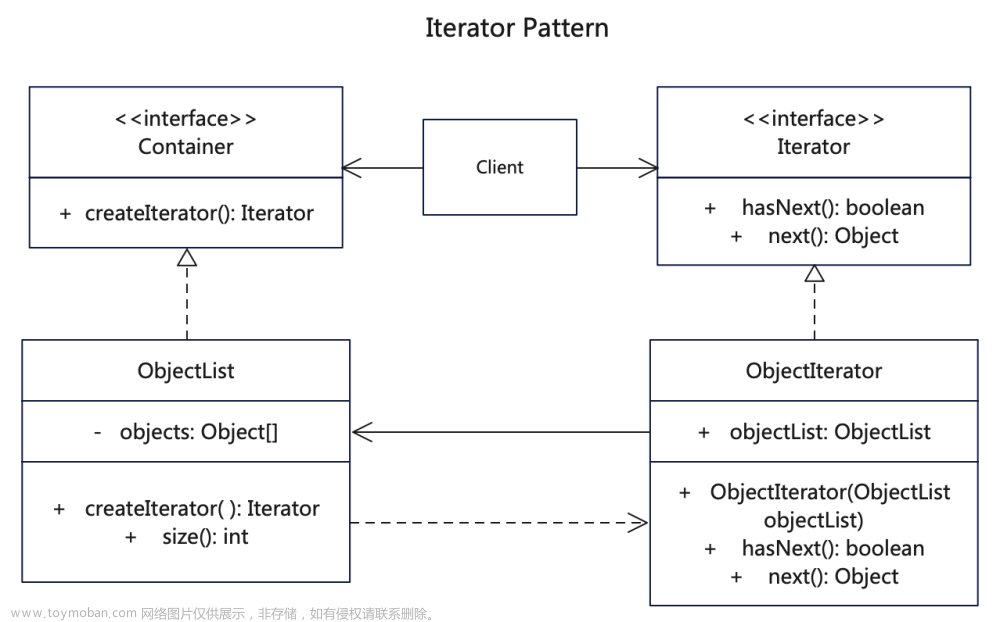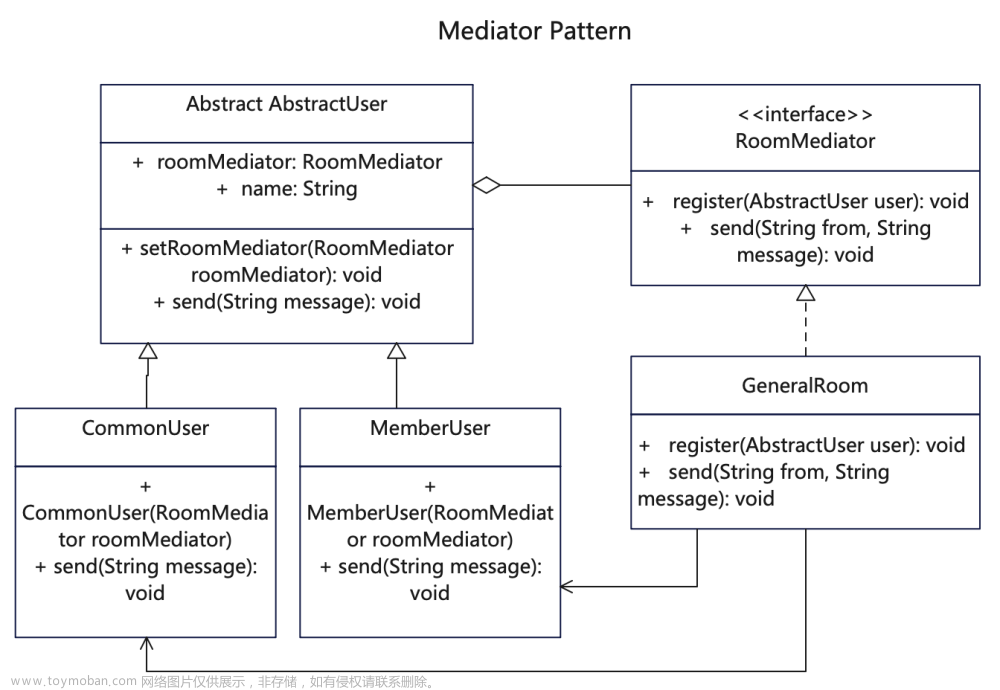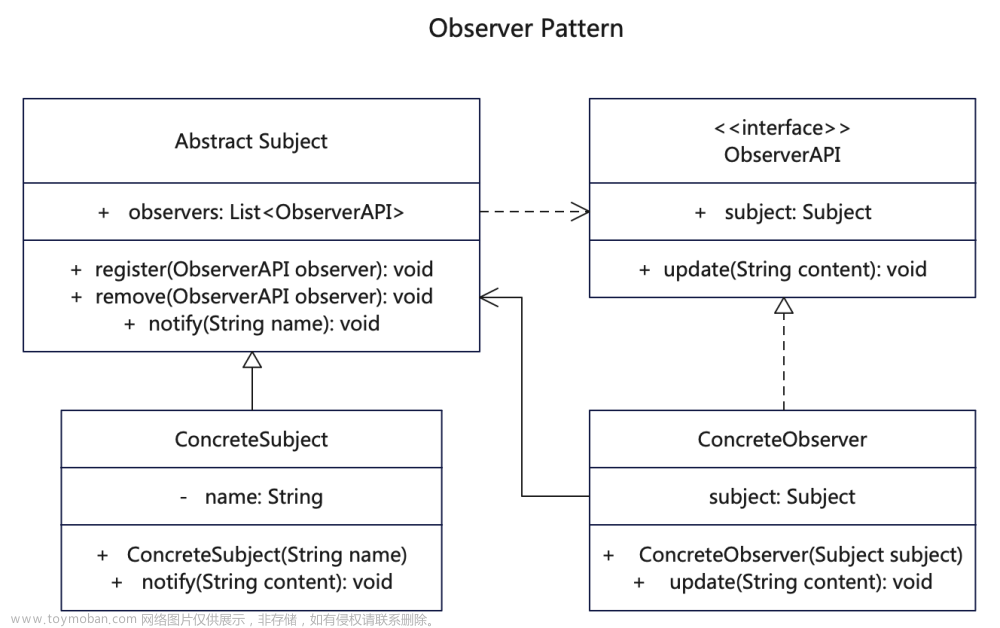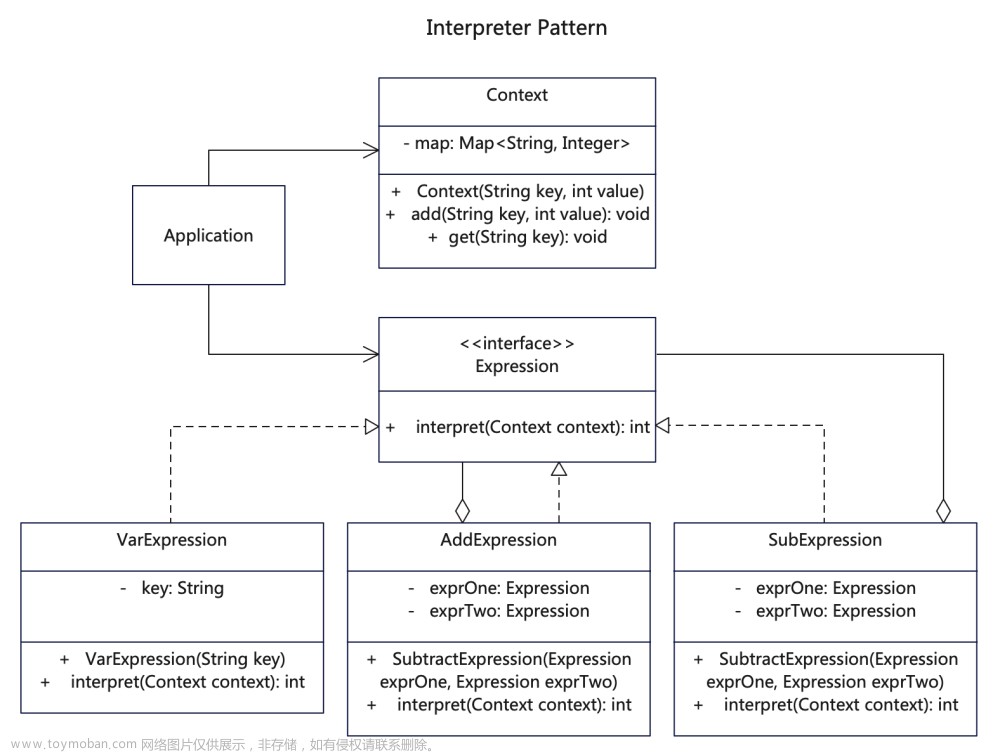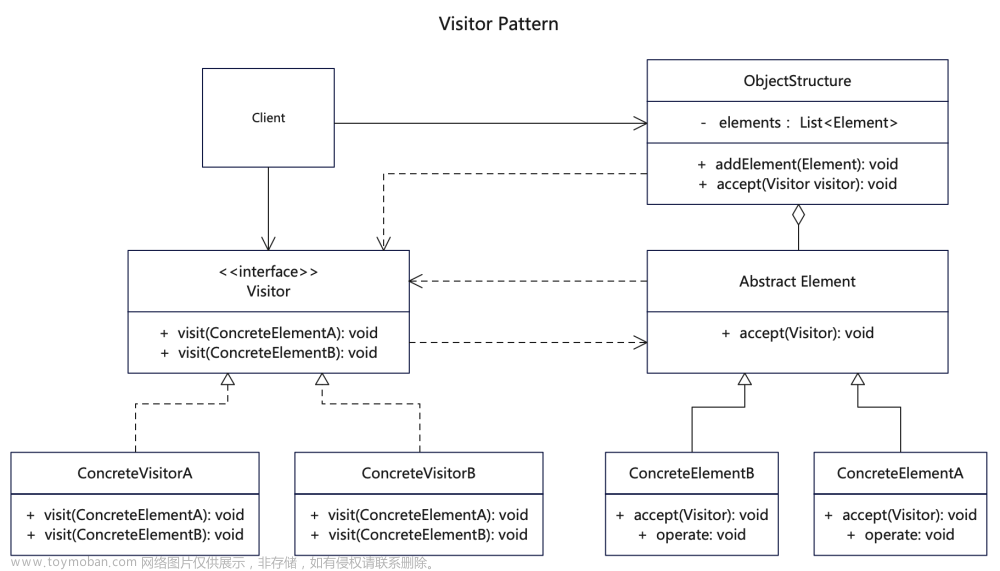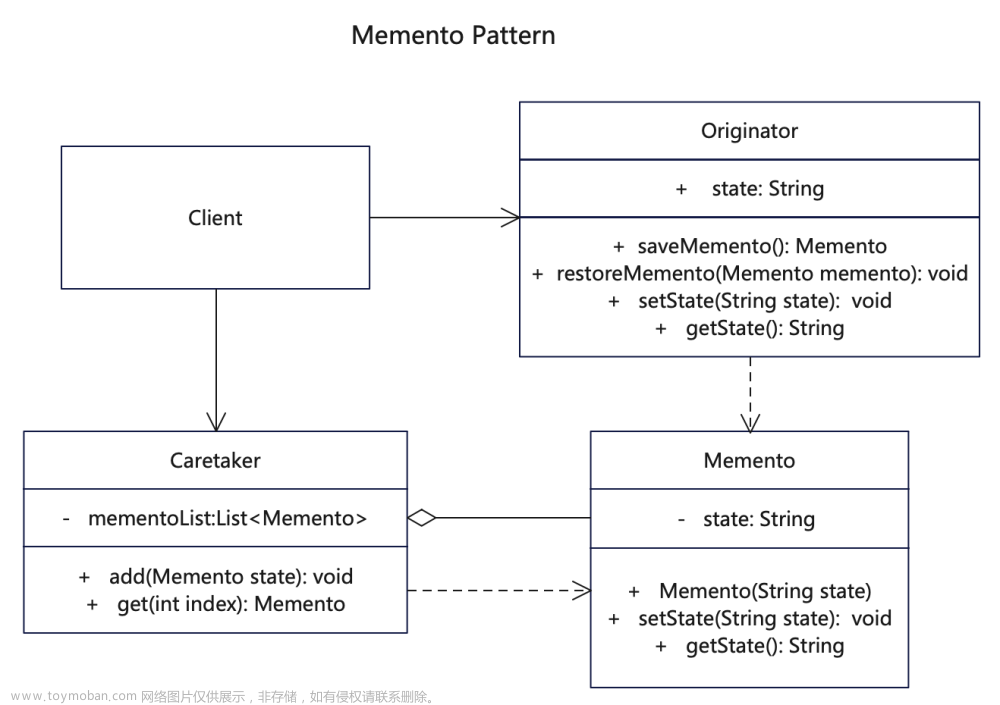简介
原型模式(Prototype Pattern)是一种创建型设计模式,使你能够复制已有对象,而无需使代码依赖它们所属的类,同时又能保证性能。
这种模式是实现了一个原型接口,该接口用于创建当前对象的克隆。当直接创建对象的代价比较大时,则采用这种模式。
如果你需要复制一些对象,同时又希望代码独立于这些对象所属的具体类,可以使用原型模式。文章来源:https://www.toymoban.com/news/detail-423491.html
作用
- 利用已有的一个原型对象,快速地生成和原型对象一样的实例。
- 跳过构造函数的约束,便于提升性能。
实现步骤
- 创建原型接口,并声明克隆方法。
- 使用new运算符调用原型版本的构造函数。
- 将子类构造函数的直接调用,替换为对原型工厂方法的调用。
UML

文章来源地址https://www.toymoban.com/news/detail-423491.html
Java代码
基础原型抽象类
// Shape.java 基础抽象类
public abstract class Shape implements Cloneable {
private int width;
private int height;
private String color = "";
protected String type;
public Shape() {
}
public String getType() {
return type;
}
// 抽象方法,子类覆盖
public abstract void draw();
public void setWidth(int width) {
this.width = width;
}
public int getWidth() {
return this.width;
}
public int getHeight() {
return this.height;
}
public void setHeight(int height) {
this.height = height;
}
public void setColor(String color) {
this.color = color;
}
public String getColor() {
return this.color;
}
// 克隆方法
public Object clone() {
Object clone = null;
try {
clone = super.clone();
} catch (CloneNotSupportedException e) {
e.printStackTrace();
}
return clone;
}
@Override
public String toString() {
return String.format("{width = %s, height = %s, type = %s, color = %s }",
this.width, this.height, this.type, this.color);
}
}
具体原型者
// Circle.java 具体原型类,克隆方法会创建一个新对象并将其传递给构造函数。
public class Circle extends Shape {
public Circle() {
super();
type = "Circle";
}
@Override
public void draw() {
System.out.println("Circle::draw() method.");
}
}
// Rectangle.java 具体原型类,克隆方法会创建一个新对象并将其传递给构造函数。
public class Rectangle extends Shape {
public Rectangle() {
super();
type = "Rectangle";
}
@Override
public void draw() {
System.out.println("Rectangle::draw() method.");
}
}
// 具体原型类,克隆方法会创建一个新对象并将其传递给构造函数。
public class Square extends Shape {
public Square() {
super();
type = "Square";
}
@Override
public void draw() {
System.out.println("Square::draw() method.");
}
}
客户使用类
// Application.java 客户调用方
public class Application {
public List<Shape> shapes = new ArrayList<Shape>();
public Application() {
}
public void addToShapes() {
Circle circle = new Circle();
circle.setWidth(10);
circle.setHeight(20);
circle.setColor("red");
shapes.add(circle);
// 添加clone
Circle anotherCircle = (Circle) circle.clone();
anotherCircle.setColor("pink");
shapes.add(anotherCircle);
// 变量 `anotherCircle(另一个圆)`与 `circle(圆)`对象的内容完全一样。
Rectangle rectangle = new Rectangle();
rectangle.setWidth(99);
rectangle.setHeight(69);
rectangle.setColor("green");
shapes.add(rectangle);
// 添加clone
shapes.add((Shape) rectangle.clone());
}
// 直接取出
public Shape getShape(Integer index) {
return this.shapes.get(index);
}
// 取出时候clone
public Shape getShapeClone(Integer index) {
Shape shape = this.shapes.get(index);
return (Shape) shape.clone();
}
public void printShapes() {
for (int i = 0; i < this.shapes.size(); i++) {
Shape shape = this.shapes.get(i);
System.out.println("shape " + i + " : " + shape.toString());
}
}
}
测试调用
/**
* 原型模式主要就是复制已有的对象,而无需实例化类,从而提升实例化对象时的性能
* 其实就是复制实例的属性到新对象上,减少了执行构造的步骤
*/
Application application = new Application();
application.addToShapes();
Shape shapeClone = application.getShapeClone(1);
// 更改clone
shapeClone.setColor("gray");
System.out.println("shapeClone : " + shapeClone.toString());
// 直接更改
application.getShape(3).setColor("yellow");
application.printShapes();
// /*********************** 分割线 ******************************************/
application.shapes.add(new Square());
for (Shape shape : application.shapes) {
shape.draw();
System.out.println(shape.toString());
}
C代码
基础原型抽象类
// func.h 基础头文件
#include <stdio.h>
#include <ctype.h>
#include <stdlib.h>
#include <stdbool.h>
#include <string.h>
typedef struct Shape shape;
typedef struct Circle circle;
typedef struct Rectangle rectangle;
typedef struct Square square;
// 定义了Shape作为基础接口,以便各形状有统一类型
typedef struct Shape
{
char name[50];
int width;
int height;
char color[50];
char category[50];
void (*draw)(struct Shape *shape);
struct Shape *(*clone)(struct Shape *shape);
char *(*to_string)(struct Shape *shape);
void (*set_width)(struct Shape *shape, int width);
int (*get_width)(struct Shape *shape);
void (*set_height)(struct Shape *shape, int height);
int (*get_height)(struct Shape *shape);
void (*set_color)(struct Shape *shape, char *color);
char *(*get_color)(struct Shape *shape);
void (*set_category)(struct Shape *shape, char *category);
char *(*get_category)(struct Shape *shape);
} Shape;
Shape *shape_constructor(char *name);
typedef struct Circle
{
char name[50];
int width;
int height;
char color[50];
char category[50];
void (*draw)(struct Circle *shape);
struct Circle *(*clone)(struct Circle *shape);
char *(*to_string)(struct 到了这里,关于【原型设计模式详解】C/Java/JS/Go/Python/TS不同语言实现的文章就介绍完了。如果您还想了解更多内容,请在右上角搜索TOY模板网以前的文章或继续浏览下面的相关文章,希望大家以后多多支持TOY模板网!

